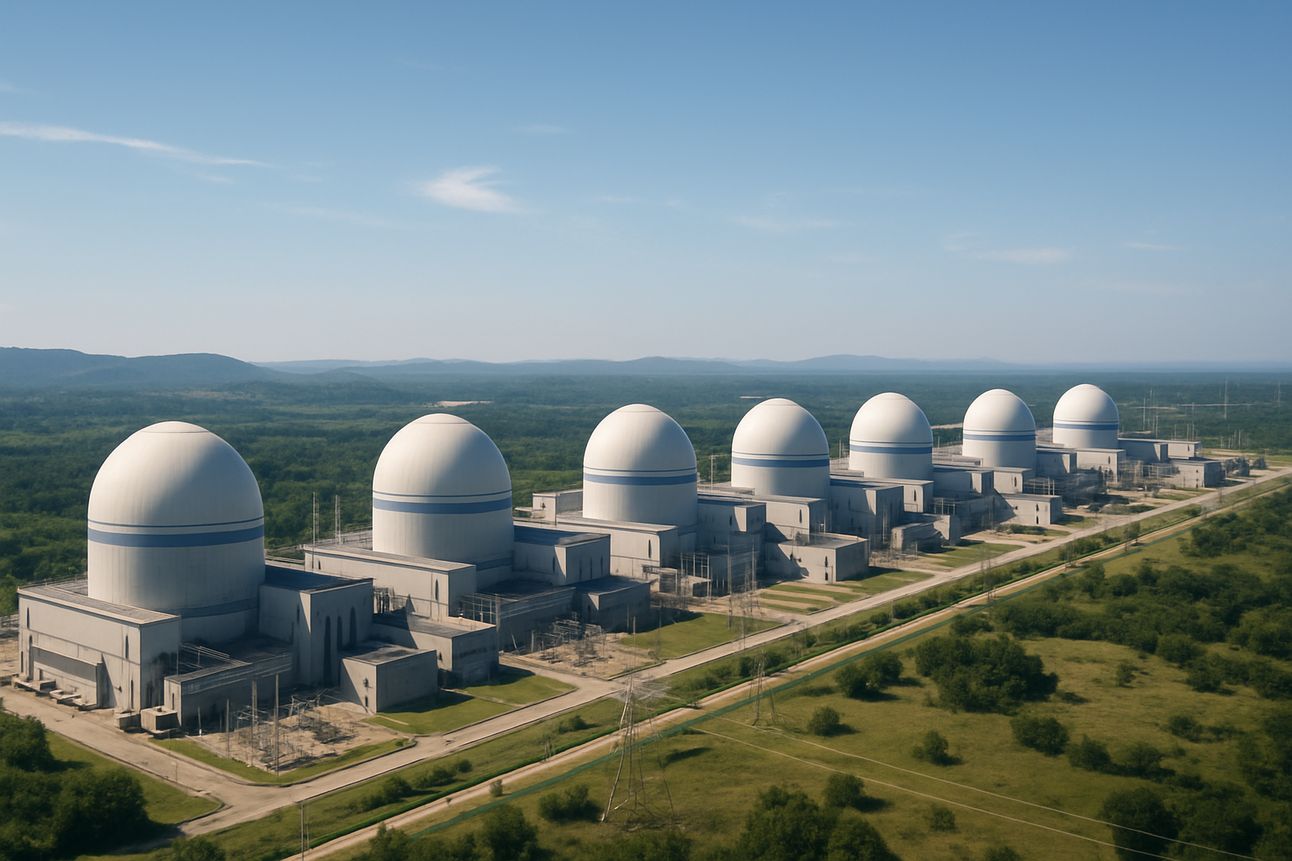- XcessAI
- Posts
- The AI Power Problem
The AI Power Problem
Why Energy Could Be the Biggest Bottleneck in the AI Boom

Welcome Back to XcessAI
Hello AI explorers,
Last week, we looked at Collective-1, a bold attempt to decentralize how AI is trained. It showed that the future of AI isn't just about smarter models — it's about smarter infrastructure.
This week, we're staying on the infrastructure track, but from a different angle: energy.
AI’s rapid growth is transforming industries, but there’s a hidden cost most people overlook — the enormous amount of electricity these models consume.
From training massive LLMs to running them in real time, AI is becoming one of the most power-hungry technologies on Earth — and that’s on top of the already large energy demands of the crypto boom.
So the question is: Can we keep scaling AI without breaking the energy bank?
Let’s take a closer look.
How Much Power Does AI Actually Use?
It’s easy to think of AI as “invisible” — software that lives in the cloud, summoned by a prompt.
But every time you interact with an AI model, you're tapping into a physical infrastructure: data centres packed with GPUs, running 24/7, cooled by industrial systems, and drawing power from local grids.
The numbers are staggering:
GPT-3 is estimated to have consumed 1.3 gigawatt-hours of electricity just for training — roughly the same as 100 average US homes use in a year. That’s roughly the same as 1.5 million iPhone charges — or enough to microwave popcorn nonstop for over 100 years in a typical home. One model. One training run.
Inference costs (the energy used to answer your prompts) now dwarf training costs due to usage at global scale. For context, a single ChatGPT prompt can use up to 10–100 times more energy than a traditional Google search. Multiply that by billions of daily queries — and the power bill adds up fast.
Some forecasts suggest that by 2027, AI could consume as much electricity as an entire country like Sweden.
And that’s just the beginning.
Why This Is Becoming a Problem
As AI scales, the power problem isn’t theoretical — it’s becoming a real constraint.
Here’s what’s happening:
Cloud giants like Microsoft, Amazon, and Google are racing to expand data centre capacity — but also facing local energy limits. Some of these facilities now consume as much electricity as a small town, and their cooling systems are so intense they require permits to discharge heated water into local rivers. The environmental footprint is real.
Nvidia GPUs are in high demand — but they also require large energy and cooling infrastructure.
Utility grids in places like Northern Virginia and Ireland are approaching capacity due to AI-related data centre growth.
Governments are beginning to ask tough questions about who gets priority for electricity — homes, hospitals, or LLMs?
The bottleneck is no longer just about chips. It’s about kilowatt-hours.
Efficiency vs Power: A New Race
The first wave of AI was about scale — bigger models, more parameters, better performance.
But now a second wave is rising: efficiency-first models that aim to do more with less.
Startups like Mistral and Groq are building smaller, faster, energy-efficient models.
Projects like Deepseek R1 and Phi-2 show that open-weight models trained smartly can match or outperform larger systems.
Chipmakers like Cerebras and Tesla (with Dojo) are betting on custom hardware optimized for speed and power efficiency.
We're entering a new arms race: performance per watt.
The winners may not be those with the biggest models — but those with the most sustainable ones.
The Business and Geopolitical Impact
The energy problem isn’t just technical — it’s strategic.
Cost structure shift: Inference costs are ongoing. If your app is running AI 24/7, power consumption becomes a core business cost.
Competitive edge: Companies with access to cheaper or renewable energy will gain a long-term advantage.
National power: Countries with abundant energy may become AI infrastructure hubs.
Policy risk: Governments may begin regulating energy usage for AI, especially in regions already facing grid stress or climate targets.
Energy has become part of AI’s supply chain — and it may soon define who leads the race.
So What’s the Way Forward?
If current trends continue, analysts estimate that AI could consume up to 3–4% of the world’s electricity by 2030 — more than many developed countries use today.
This isn’t just a tech challenge — it’s an infrastructure one.
There’s no silver bullet, but a few strategies are emerging:
Smarter models — smaller, more efficient, more focused
Hardware breakthroughs — chips designed with energy efficiency as a first principle
Geographical diversification — building data centres where energy is clean and abundant
Collective approaches — decentralized training networks like Collective-1 that share the load across idle machines
User-side awareness — companies will need to weigh model complexity vs power cost when building AI-powered products
The bottom line?
If we want AI to scale sustainably, we need to rethink what progress looks like — not just faster or smarter, but more responsible.
Final Thoughts: The Real Cost of Intelligence
AI is no longer just a software problem. It’s a physical system — and like all physical systems, it runs on energy.
The next wave of AI innovation won’t be measured only in tokens per second or benchmarks. It will be measured in watts.
Understanding that — and planning for it — will be one of the biggest differentiators in the years to come.
Until next time,
Stay curious. Stay efficient.
And keep exploring the frontier of AI.
Fabio Lopes
XcessAI
P.S.: Sharing is caring - pass this knowledge on to a friend or colleague. Let’s build a community of AI aficionados at www.xcessai.com.
Don’t forget to check out our news section on the website, where you can stay up-to-date with the latest AI developments from selected reputable sources!
Read our previous episodes online!
Reply